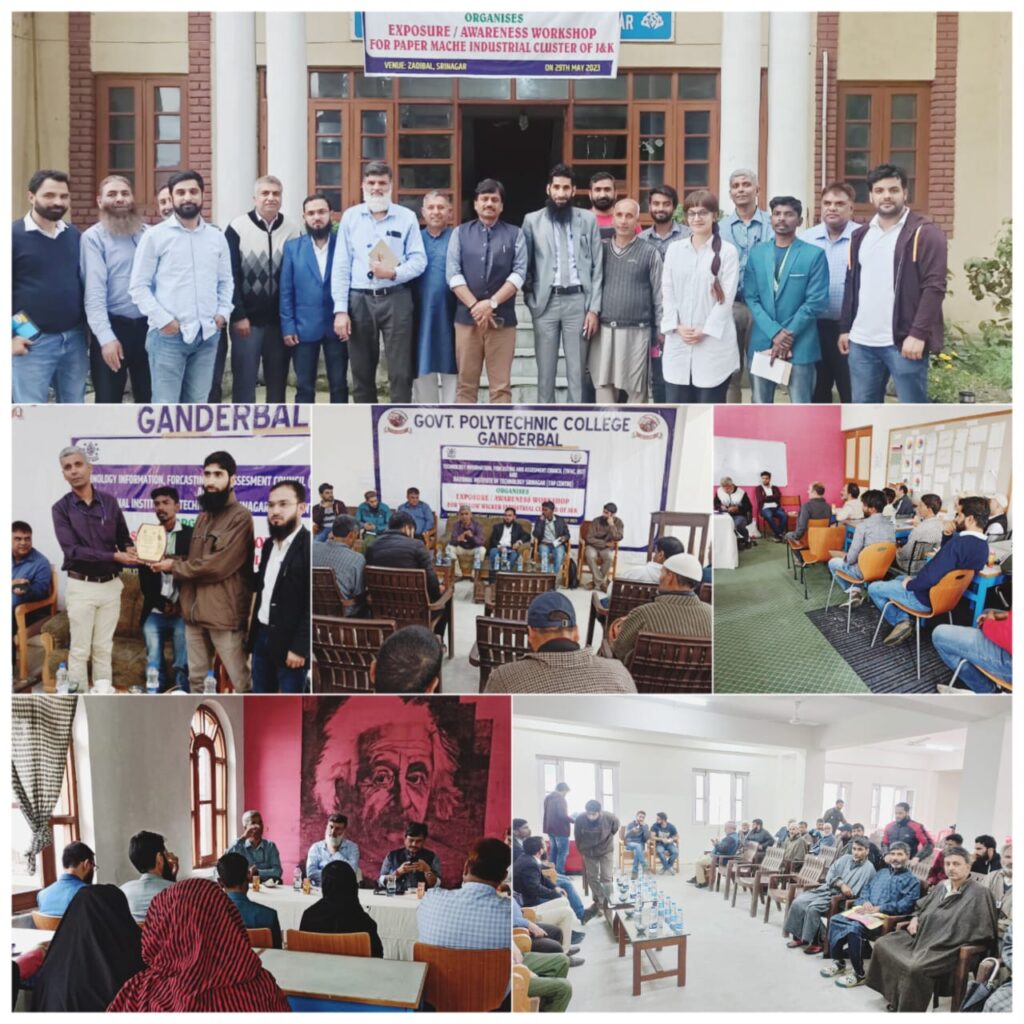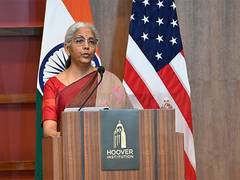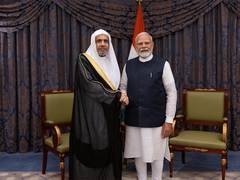3-day awareness program on ‘Sensitizing Handicraft Cluster in Kashmir’ concludes at NIT Srinagar
Srinagar, June 05: Three-day awareness program on ‘Sensitizing Handicraft Cluster on Technological Intervention in Kashmir’ concluded at National Institute of Technology (NIT) Srinagar on Sunday.

The awareness program was organized by IIED Centre, NIT Srinagar and was sponsored by DST TIFAC, New Delhi. During the three days, its organisers held different industrial clusters in Kashmir including paper mache, bats and willow wicker clusters.
Dr. Shivam Executive Director, Mr Mukesh Mathur Scientist E and Mr.Deepak Scientist D from TIFAC- TAP centre, Delhi along with Dr.Saad Parvez Head, IIEDC, Mr Saheel Allaqband Assistant Director, MSME, Dr Noor Zaman Khan Incubation In-charge, IIEDC and Dr Dinesh Kumar Rajendran Project Coordinator, IIEDC organised the events in different clusters.
In his key message, Institute’s Registrar, Prof. Syed Kaiser Bukhari said that the end-use of education is to give back to society in the form of solutions to various problems. There is a need for such an awareness program for development of skills and knowledge for the handicraft cluster, he said.
Prof. Bukhari said technology can enhance certain aspects of the handicraft industry, it’s crucial to respect and value the cultural heritage and artisanal skills that have been passed down through generations.
“The integration of technology should be done in a way that supports and empowers artisans while preserving the authenticity and uniqueness of their craft. The integration of technology should be done in a way that supports and empowers artisans while preserving the authenticity and uniqueness of their craft, he said.
Prof. Saad Parvez, Head IIEDC and Convenor of the Program said there is a need to do something for the people, society in all the good ways we can.
“IIED Centre is strongly focusing on Development of the valley by collaborating with DST and other Innovation and intervention since 2017 with various Design, intervention and Incubation schemes, ” he said.
Mr.Saheel Allaqband, Assistant Director, MSME urged the artisans that it is the right time to bridge the gap between artisans and Academia for the prosperous growth of the nation on technology and employability.
Dr Shivam, Executive Director DST TAP centre explained to the Industrialist about various schemes available in potential mechanisms in the cluster, the funding mechanism and the support extended by the ministry for various sectors in Kashmir valley.
He also added that Kashmir has its own resource which is unique in the country and it has huge potential on handicraft, kesar, walnut, apple hence it is high time to establish the sector to compete in the Global Market.
Mr Mukesh Mathur introduced the artisans about the various aspects of technology intervention and also addressed the artisans about how better technology innovation can improve the productivity and profit to the handicrafts.
He also added Innovation can take the artisans to the higher standard in the global market.
Dr. Noor Zaman Khan, introduced the Institute facility such as 5 axis CNC machine and Wire EDM machine which is highly needed by all the artisans to make moulds and designs with innovation since the valley does not hold any facility for precision machining and cutting.
He offered the industries to utilise the resources and expertise available in NIT Srinagar rather than going to Delhi and Punjab for every need. He also added NIT has a high-end facility that can support most of the problems faced by Industry.
Dr. Dinesh Kumar Rajendran, said they (We) have successfully completed the awareness programs for artisans in Kashmir on technology intervention.
“We have visited different clusters, understood the handicraft process and also collected feedback from all the artisans to understand the needs of artisans in willow wicker, paper mache and bat clusters,” he said.
“We are planning to involve the students team to resolve the problems in various handicrafts associated with design, production, process and maintenance,” Dr. Dinesh said.
(NOTE: PRESS RELEASE PUBLISHED AS RECEIVED)






